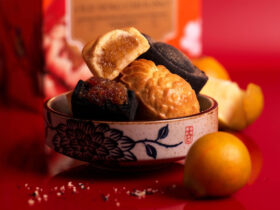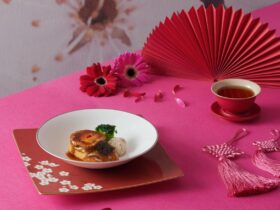Better known for sake than wines, Japan offers some unique varietals for the adventurous

In the days when I was a lad, the wines that were available were mostly European or, specifically, French — how things have changed.
Since then, the USA appears to have dethroned France as the top producer of fine wines and, thereafter, this opened the floodgates for many other countries to enter the fray. Now, the world is thirsty for all types of wine from every corner of the world.
Rising Wine from the Rising Sun

From the Land of the Rising Sun where sake rules, Japanese wines are gradually ascending to the world stage.
I was surprised to find that Japan has a long heritage of winemaking. Tomi Farm, now called Suntory Tomi No Oka Winery, was started in 1909.
Yamanashi Prefecture, where the winery is located, is home to Japan’s Kosyu grapes — a white varietal that has been cultivated for 1,000 years. Tomi is also home to a local red varietal called Muscat Bailey A, created by the “father of the Japanese wine grape”, Zenbei Kawakami, in 1936.
I had the pleasure of tasting from two of Suntory’s Japanese wine labels. The first is Tomi No Oka Winery and the other is called Japanese Premium, which uses grapes from select vineyards across Japan.
The Three Whites

Japan Premium Shinshu Chardonnay 2012, produced in Nagano Prefecture, is a very clear and mild white wine with hints of white flower, pear and citrus notes. It has a smooth, light, watery texture in the mouth and nicely-balanced acidity. It would easily go with many white meat and fish options.
The Japan Premium Kosyu 2013 and Tomi No Oka Kosyu 2012 are both white wines made from Kosyu grapes from the Yamanashi region. The former, made from the juice of frozen grapes and aged using the sur lie method (being aged on lees or yeast deposits), is fermented and aged completely in stainless steel tanks. It has a pale yellowish colour, smooth and delicate texture, and carries a hint of Japanese citrus.
The latter is from Kosyu grapes picked three weeks after ripening and blended from 50 per cent stainless steel batch and 50 per cent French oak batch. It is stronger in flavour, with peach and white flower notes, and is pleasant and mild with a nice rounded flavour. The oak imparted a delicate butterscotch aroma, which makes this my favourite between the two.
The Three Reds

Tomi No Oka also grows other grape varietals. In its Red 2011, Merlot, Cabernet Sauvignon and Cabernet Franc are blended together to bring out the subtleties of blueberry and prune aromas with a definitive scent of vanilla from the oak barrels. Of the three reds, this is perhaps the most robust and full-bodied.
While both the Japan Premium Muscat Bailey A 2012 and Shiojiri Muscat Bailey A 2013 use the same varietal, the former, lighter in body, was blended with barrel-aged wine to add more complexity.
The slightly heavier and more intense Shiojiri is tank-aged and preserves the fruitiness of the grape.
Both of these wines had a slight somewhat herbal bitterness, which didn’t suit my taste. But it’s always a pleasure to experience something new.
By Frank Young
These wines are available from The Beam Cellar, 229 Mountbatten Road.
Weekender would like to thank Beam Suntory for the wine tasting and Lewin Terrace for the food pairing.
ADVERTISEMENTS










Leave a Reply